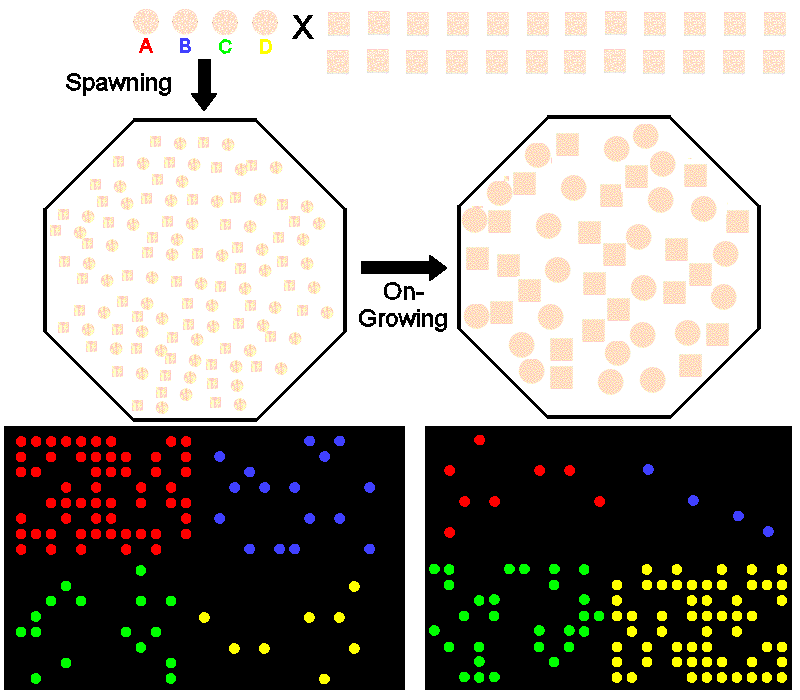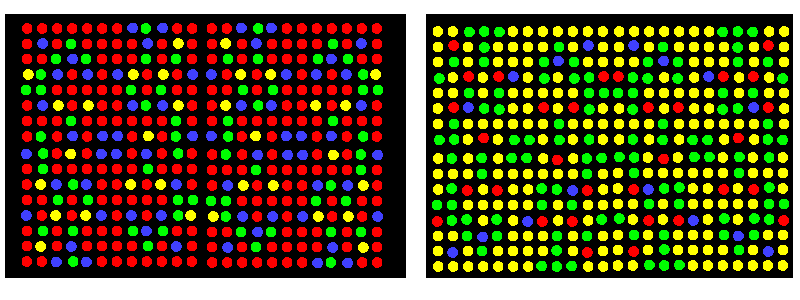

Large-Scale
PCR-ASO assay:
Differential female
broodstock success & larval cohort survival
The mtDNA genome can be used directly to monitor differential female breeding success, or differential larval cohort survival in aquaculture cages.
MtDNA genome re-sequencing of four females identifies four SNPs, and four SNP-specific ASOs are constructed (A, B, C, & D). A mass-spawning experiment mixes the four females with a large number of males (top). 96 larvae are chosen at random: all four PCR-ASO tests are run on each larva, one in each quadrant of a 384-well plate (bottom, left). The female with SNP A is the most successful spawner (56/96 larvae), while the female with SNP D is least successful (8/96 larvae), and the B & C females are equally successful (16 @).
After
on-growing, the tests are repeated on new fish. Among post-settlement
fish, only 8/96 have the A SNP, whereas 56/96 have
the D
SNP, indicating a
seven-fold
survival advantage. C females have also
gained a seven-fold advantage over B
females (28 versus 4 /96). The data can be included in a
production model to predict
which female is optimal for choice as broodstock.
In the diagrams above, the rtPCR detector actually uses only a single experimental fluorescent
colour (plus a second for the Control), which a computer "re-colors"
for the investigator's comfort. With
the current generation of multiplex
rt-PCR cyclers that can employ five simultaneous fluorescence colours (four
"experimental" plus a control), the four tests can be run
simultaneously, with a four-fold gain in throughput.
